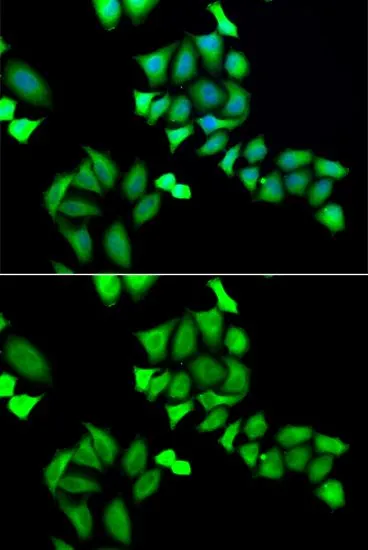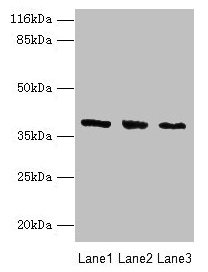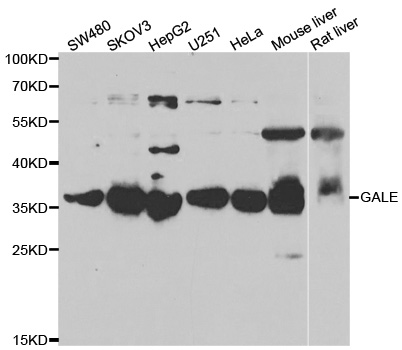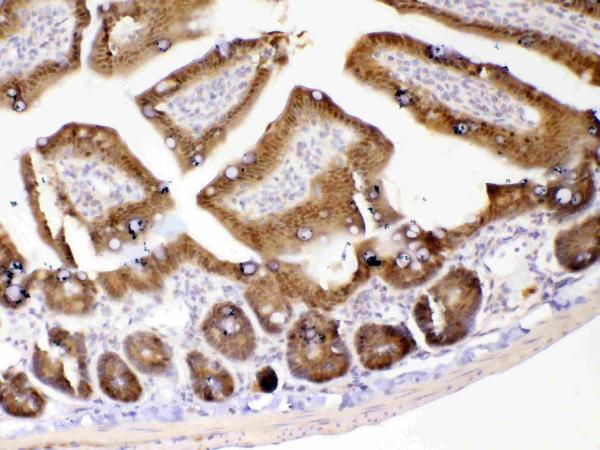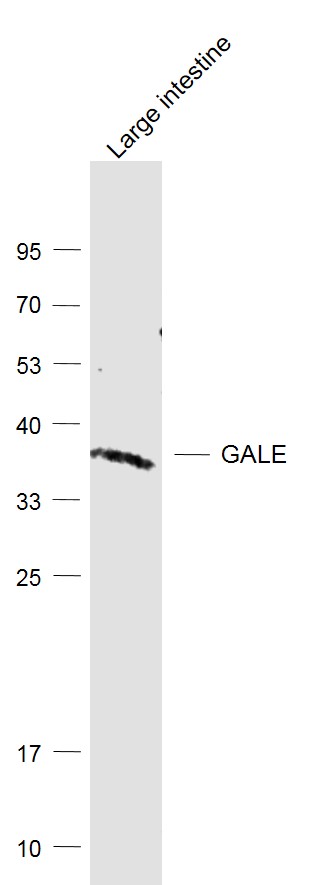
WB analysis of various sample lysates using GTX33212 GALE antibody. Dilution : 1:1000 Loading : 25microg per lane
GALE antibody
GTX33212
ApplicationsImmunoFluorescence, Western Blot, ImmunoCytoChemistry
Product group Antibodies
TargetGALE
Overview
- SupplierGeneTex
- Product NameGALE antibody
- Delivery Days Customer9
- Application Supplier NoteWB: 1:500 - 1:2000. ICC/IF: 1:10 - 1:100. *Optimal dilutions/concentrations should be determined by the researcher.Not tested in other applications.
- ApplicationsImmunoFluorescence, Western Blot, ImmunoCytoChemistry
- CertificationResearch Use Only
- ClonalityPolyclonal
- ConjugateUnconjugated
- Gene ID2582
- Target nameGALE
- Target descriptionUDP-galactose-4-epimerase
- Target synonymsSDR1E1, THC13, UDP-glucose 4-epimerase, UDP galactose-4'-epimerase, UDP-GalNAc 4-epimerase, UDP-GlcNAc 4-epimerase, UDP-N-acetylgalactosamine 4-epimerase, UDP-N-acetylglucosamine 4-epimerase, epididymis secretory sperm binding protein, galactose-4-epimerase, UDP-, galactowaldenase, short chain dehydrogenase/reductase family 1E, member 1
- HostRabbit
- IsotypeIgG
- Protein IDQ14376
- Protein NameUDP-glucose 4-epimerase
- Scientific DescriptionThis gene encodes UDP-galactose-4-epimerase which catalyzes two distinct but analogous reactions: the epimerization of UDP-glucose to UDP-galactose, and the epimerization of UDP-N-acetylglucosamine to UDP-N-acetylgalactosamine. The bifunctional nature of the enzyme has the important metabolic consequence that mutant cells (or individuals) are dependent not only on exogenous galactose, but also on exogenous N-acetylgalactosamine as a necessary precursor for the synthesis of glycoproteins and glycolipids. Mutations in this gene result in epimerase-deficiency galactosemia, also referred to as galactosemia type 3, a disease characterized by liver damage, early-onset cataracts, deafness and cognitive disability, with symptoms ranging from mild (peripheral form) to severe (generalized form). Multiple alternatively spliced transcripts encoding the same protein have been identified. [provided by RefSeq, Jul 2008]
- Storage Instruction-20°C or -80°C,2°C to 8°C
- UNSPSC12352203

